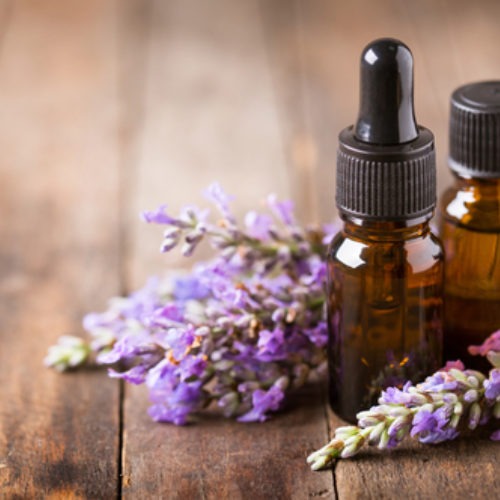
Merriam Webster defines the words holistic and alternative as follows:
Holistic – relating to or concerned with wholes or with complete systems, rather than with the of analysis, treatment of, or dissection into parts.
Alternative – different from the usual or conventional.
I’ve occasionally found these terms have negative connotations in some medical circles, so I thought it best to clear up exactly what I’m talking about before writing this article. Though these terms apply to a wide variety of definitions in the medical world, for the sake of this article, I’m only going to cover the very minimum.
As nurses, we practice holistic care everyday. I’ll use a simple example of a patient with lung disease who is a heavy smoker. We wouldn’t be very good at our job if we offered medicines, but didn’t suggest the patient cut back, or quit smoking altogether. This, by definition, is approaching the wellness of the patient holistically.
Alternative therapy may range from modern medical science to taboo, but the term basically means therapies not used everywhere. More than 50 percent of the hospitals in the U.S. use Complementary and Alternative Medicines (CAM). There is undoubtedly a place for many conventional and alternative therapies. I absolutely believe we must keep an open mind. Medicine is always changing and evolving, and there are thousands of years of treatments that must be considered.
Through my travels working and volunteering in hospitals worldwide, I’ve been privileged to see a wide variety of medical practices, therapies, and approaches to wellness for patients. We must look at all variables and considerations available to offer the best possible wellness path for our patients. Below I’ve outlined a few considerations for patient care that are common practice in many places, but they should be fairly easy considerations for patients everywhere.
Diet
This is the very beginning of the wellness path for me and my patients. I know how important diet is in wellness and it often seems my patients are undereducated. We all know food is fuel for the body, and obviously, everything we put in our bodies plays roles in health. Surprisingly, I’ve experienced situations where this area is overlooked or simply not supported correctly. Unfortunately, a lot of hospitals are serving patients meals that aren’t highly nutritious and supportive of healing. I’ve often had to adjust food orders to best serve a patient. This topic speaks to my soul because I know well that food is medicine. I often discuss their habits away from the hospital and I find them very receptive as a whole to any suggestions I have. It’s our responsibility to be knowledgeable and teach basic nutrition information whenever we see the need. Though I never claim to be a nutritionist, if your patient has severely clogged arteries, they need to hear from their care provider that bacon cheeseburgers could kill them regardless of how helpful surgery or pills may be.
Movement
Exercise strengthens our body on all fronts and in return delivers more oxygen and nutrients to our tissues. There’s no shortage of science on the importance of daily movement. It releases a ton of endorphins and makes you feel energized.
You shouldn’t hesitate to get to know your patient and assess their daily movement habits. Aside from suggesting physical therapies, it’s easy to inspire your patients to embrace more movement in their life, especially as their medical professional. Teach them about things that have personally helped you or someone you know. I always feel the most gratitude when I’m teaching my patients because I find that they appreciate the time spent with them. I also find they are more likely to follow my suggestions when I devote more time and energy to them as a person instead of just another patient.
Hot / Cold Therapy
This is always my go-to in the hospital because it’s readily available and so effective. Heat and cold therapy can be used for a variety of symptoms such as pain, inflammation, and swelling. By using these types of therapies, we can speed up or slow down the blood flow to the affected area. As nurses, we know this is extremely beneficial in the healing process. Knowing when to use each therapy is very important so be sure to educate yourself properly before recommending either of these therapies.
Guided Imagery / Meditation / Yoga
These are effective therapeutic techniques for pain, anxiety, immune support, and overall well-being. These therapies have been embraced worldwide for centuries and they are crucial basics for any nurse that wants to integrate the paradigm shift in healthcare.
- Guided Imagery – By guiding your patients to a place, person, or time that they felt pure wellness and happiness, you can easily redirect them to emotions that feel good. It’s well-known that our emotions create our reality and our body interprets this process physically. This therapy is extremely useful when a patient is experiencing pain or about to undergo a stressful procedure. We help guide them to use their imagination to experience relaxation instead of focusing on the discomfort.
- Meditation / Yoga – Many of the leading hospitals have embraced these therapies for years. They are proven to benefit mind, body, and spirit and are used in wellness programs worldwide. If you aren’t already aware of the basics in these two practices, definitely do some research.
Aromatherapy
Aromatherapy has been around for centuries, and it’s quickly becoming common in hospitals in the U.S. If you’ve noticed an essential oil trend going on, it’s because these medicines come directly from the earth and are beneficial on so many fronts. There are 100’s of scents that our bodies naturally respond to. When we stimulate our smell receptors in the nose, a message is sent through the nervous system which is then sent to the limbic system (the part of the brain that controls emotions). When ingested, essential oils can have several benefits. Essential oils are versatile, widely available (although not created equal, so be sure to use and suggest medicinal quality), and they benefit a wide range of illnesses and conditions. Educate yourself on a few oils and pass this wisdom on to your patients whenever the situation is appropriate, which for this nurse is at every corner! This is a very small list compared to what’s available. Thousands of medical practitioners and I agree that holistic care and alternative therapies are at the very core of healing. It’s therefore essential that nurses stay up to date and open minded to these approaches. Nurses, and everybody for that matter, should never stop learning, growing, and developing.

